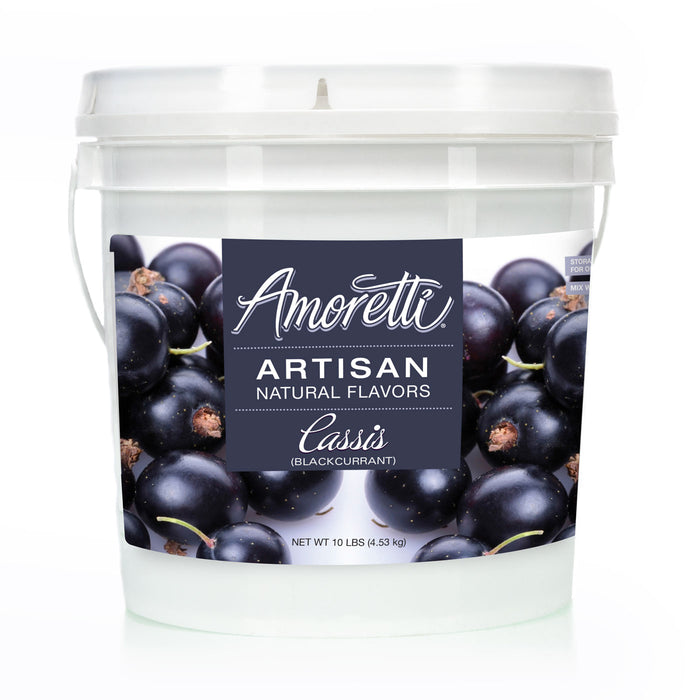Understanding Cassis Blackcurrant Production And History

Table of Contents
A Deep Dive into Blackcurrant Cultivation
The foundation of exceptional Cassis lies in the quality of its blackcurrants. While many varieties exist, certain types are prized for their suitability in producing this exquisite liqueur. The Noir de Bourgogne variety, for example, is highly regarded for its intense aroma and deep color, making it a favored choice amongst Cassis producers. Successful blackcurrant cultivation demands specific conditions.
-
Blackcurrant Growing Regions: The ideal climate for blackcurrants is cool and temperate, with plenty of rainfall. Burgundy, France, with its fertile soil and favorable climate, is renowned for producing blackcurrants of exceptional quality—a key reason why many consider it the birthplace of the finest Cassis. Other regions, however, are also successfully cultivating blackcurrants for cassis production.
-
Soil Requirements and Climate Requirements: Well-drained soil with a slightly acidic pH (around 6.0-6.5) is crucial. Blackcurrants thrive in full sun but appreciate some protection from strong winds. Consistent moisture is vital, especially during the growing season, but waterlogging must be avoided.
-
Cultivation Techniques: Careful attention to cultivation is key. This includes:
- Planting: Planting blackcurrant bushes in the late autumn or early spring ensures successful establishment.
- Pruning: Regular pruning is essential to maintain healthy growth and high yields.
- Pest and Disease Management: Blackcurrants are susceptible to various pests and diseases, necessitating careful monitoring and preventative measures. Common issues include aphids, mites, and fungal diseases. Sustainable farming practices are increasingly important in minimizing the environmental impact of blackcurrant production.
- Optimal Harvesting Time: Harvesting blackcurrants at the peak of ripeness is crucial for achieving the desired flavor and aroma in the final Cassis product. This typically occurs in late summer or early autumn.
The Cassis Production Process: From Berry to Bottle
The transformation of ripe blackcurrants into Cassis is a multi-stage process requiring precision and expertise. Let's explore the key steps:
-
Harvesting and Sorting: The process begins with the careful harvesting and sorting of ripe blackcurrants. Only the highest-quality berries, free from blemishes and damage, are selected.
-
Maceration: This is a crucial step where the blackcurrants are steeped in high-quality alcohol (typically neutral grain spirit) for several weeks. This maceration process extracts the berries' color, flavor, and aroma, creating the foundation of Cassis' distinctive character.
-
Fermentation (for some variations): Some Cassis producers incorporate a fermentation stage, allowing natural yeasts to convert sugars in the berries into alcohol, adding complexity to the final product.
-
Distillation (for some variations): Certain types of Cassis may involve a distillation step to refine the extract, concentrating its flavors and aromas and removing undesirable compounds.
-
Sugar Addition: Sugar is carefully added to balance the inherent tartness of the blackcurrants and achieve the desired sweetness and body of the final liqueur.
-
Aging Process (if applicable): Some higher-end Cassis varieties undergo an aging process, often in oak barrels, to further enhance their complexity and smoothness.
Regional Variations in Cassis Production
While the core process remains consistent, regional variations exist, reflecting terroir and local traditions. The nuances in soil composition, climate, and even the specific blackcurrant varieties used can subtly influence the final flavor profile of the Cassis, resulting in subtle but distinct differences between producers and regions. The subtle variations of crème de cassis are a testament to this fact.
A Journey Through Cassis History
The history of Cassis is intertwined with the rich agricultural heritage of Burgundy, France. While the exact origins are debated, its popularity surged in the 19th century, propelled by the growing appreciation for liqueurs and the unique qualities of blackcurrant.
-
Key Historical Milestones: The development of efficient distillation techniques and the increasing demand for sophisticated alcoholic beverages greatly contributed to Cassis' evolution.
-
The Emergence of Crème de Cassis: Crème de Cassis, a sweeter and often creamier variation, emerged as a popular variant, broadening the appeal of the liqueur.
-
Technological Advancements: Technological advancements in both blackcurrant cultivation and liqueur production have further refined the process, leading to higher yields and consistent quality.
-
Cassis in Mixology: Cassis has found a prominent place in mixology, forming the base for numerous cocktails, notably the Kir Royale (Cassis and Champagne). Its rich color and bold flavor make it a versatile and sought-after ingredient in modern and classic cocktail creations.
Conclusion
Understanding the production of Cassis reveals a journey from the careful cultivation of blackcurrants to the meticulous creation of a beloved liqueur. From the specific soil requirements and climate conditions ideal for cultivating the right blackcurrant varieties, to the various steps in the production process – including maceration, distillation (in some cases), and the careful addition of sugar – each element contributes to the final character of this iconic drink. The historical context adds another layer to appreciation, highlighting the evolution of this unique liqueur and its enduring popularity. Learn more about the fascinating world of Cassis and explore the diverse range of Cassis blackcurrant products available. Enjoy responsibly!

Featured Posts
-
 The Goldbergs A Nostalgic Look At 1980s Family Life
May 21, 2025
The Goldbergs A Nostalgic Look At 1980s Family Life
May 21, 2025 -
 United Kingdom Tory Wifes Imprisonment For Anti Migrant Remarks
May 21, 2025
United Kingdom Tory Wifes Imprisonment For Anti Migrant Remarks
May 21, 2025 -
 31 Pay Cut For Bps Chief Executive Officer
May 21, 2025
31 Pay Cut For Bps Chief Executive Officer
May 21, 2025 -
 Vapors Of Morphine Northcote Concert Next Month
May 21, 2025
Vapors Of Morphine Northcote Concert Next Month
May 21, 2025 -
 Loire Atlantique Un Quiz Sur Son Histoire Sa Gastronomie Et Sa Culture
May 21, 2025
Loire Atlantique Un Quiz Sur Son Histoire Sa Gastronomie Et Sa Culture
May 21, 2025
Latest Posts
-
 Occasionmarkt Bloeit Abn Amro Ziet Flinke Omzetgroei
May 21, 2025
Occasionmarkt Bloeit Abn Amro Ziet Flinke Omzetgroei
May 21, 2025 -
 Abn Amros Investering In Transferz Een Impuls Voor Digitale Innovatie
May 21, 2025
Abn Amros Investering In Transferz Een Impuls Voor Digitale Innovatie
May 21, 2025 -
 Innovatief Digitaal Platform Transferz Ontvangt Financiering Van Abn Amro
May 21, 2025
Innovatief Digitaal Platform Transferz Ontvangt Financiering Van Abn Amro
May 21, 2025 -
 Transferz Krijgt Financiering Van Abn Amro Nieuwe Mogelijkheden Voor Digitale Transacties
May 21, 2025
Transferz Krijgt Financiering Van Abn Amro Nieuwe Mogelijkheden Voor Digitale Transacties
May 21, 2025 -
 Karin Polman Nieuwe Directeur Hypotheken Intermediair Bij Abn Amro Florius En Moneyou
May 21, 2025
Karin Polman Nieuwe Directeur Hypotheken Intermediair Bij Abn Amro Florius En Moneyou
May 21, 2025
